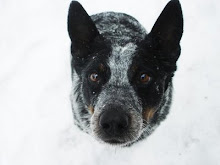“The essence of metaphor is understanding and experiencing one kind of thing in terms of another.”
―
Metaphors We Live By
Metaphor suggests one’s own ability to make a connection between two seemingly unlike objects and find their commonality. I think these last three words are key to something we often lose sight of in talking about imaginative language. The phrase "find their commonality" suggests that through commonality we create understanding. In fact, doesn't it seem that this purpose is the reason to read fiction, memoir, and whatever else we can find?
The English metaphor derives from the 16th-century Old French métaphore, which comes from the Latin metaphora, "carrying over", in turn from the Greek (metaphorá), "transfer",]from (metapherō), "to carry over", "to transfer" and that from (meta), "between" + "to bear", "to carry".
We 'carry over' a way of responding in one sphere of our lives into another.
Metaphor can happen in the verb, the noun, the adjective, and sometimes the adverb.
Consider how the metaphor creates deeper understanding in these examples of comparison between two concrete things in fiction and poetry:
The driver was hunched forward, his arms encircling the wheel, his hands hanging down like paper hands. – Desperate Characters, Paula Fox
All around them were official buildings, with the peculiar character of large carnivorous mammals momentarily asleep. – Desperate Characters
Blackbirds sit in bunches. From a distance/ they are quiet as piles of dark grain/ spilled on the road. – Tom Hennen, Darkness Sticks to Everything
Getting off the bus near the ocean,/ the passengers are left behind as buoys.--Tom Hennen, Darkness Sticks to Everything
When the mind begins to snap/ you can’t tell it/ from the sound of wind/ rattling empty milkweed pods. --Tom Hennen, Darkness Sticks to Everything
You are with me when my
courage /is as moveable as furniture. --Tom Hennen, Darkness Sticks to Everything
A playful writing exercise: Write down three things you saw this morning. Make these images into comparisons – include sensory detail if possible.
For example:
an empty bird feeder hanging on a pole
a dried out yet aromatic Christmas tree in the driveway buried under snow all winter until now
three Heirloom tomatoes on a plate
Here is what I came up with in this exercise in the Monday night creative writing workshop:
The empty bird feeder swings from its metal hook, an abandoned lighthouse.
Three Heirloom tomatoes wait on a plate like sea anemone watching for little fish prey.
A dried out Christmas tree is a woodsy Nautilus sliced open within which rabbits shelter.
How do the comparisons you make reflect who you are as an individual, with a sensibility, vocabulary and life experience original and unique from everyone else in the room?
If you want to learn more ways to play with language and use the tools of craft to develop your voice in stories you are writing, then join us in the Monday night creative writing workshop series or the Book Project workshop series!


